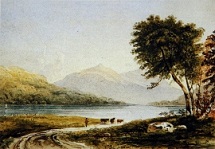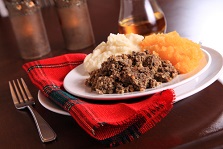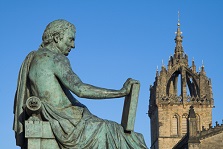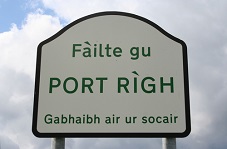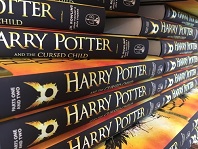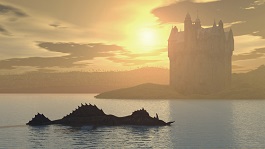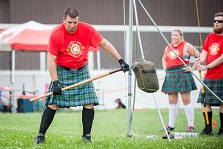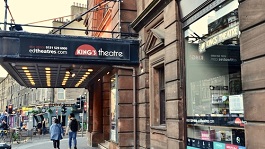Scottish Dance 101

Pipes and Drums - Lienhard Schulz
[CC-BY-SA-3.0], via Wikimedia Commons

By Beer Belly (Own work) [Public domain], via Wikimedia Commons
Scottish Dance 101
We could fill many pages by just trying to list the different Scottish dances that exist. There are around 15,000 of them. And those are only the ones that have been documented! The names of the Scottish dances can be quite colorful, e.g. “The Wind That Shakes The Barley”, “The Minister on the Loch”, “Dashing White Sergeant” and “The Bees of Maggieknockater”. Instead of giving you a complete list, we will focus on giving you some insight on the Highland Dances, the Dirk dance, Ghillies, and some general topics related to Scottish dance.
The Scottish Highland Dances
This type of Scottish dance is different from Scottish folk dances (more about those will follow further below). The Highland dances are solo dances and there are usually competitions during the Highland games (more info about those can be found in the section Scottish Sports 101). The Scottish Highland Dances are step dances but also include movements of the arms and the upper body. In some Highland Dances weapons like swords are used, and the Scottish Sword Dance is often one of the most popular dances people love watching during the Highland games.
One important factor of the Highland Dances are the way the dancers are dressed. Men have to wear a Balmoral (which is a traditional Scottish hat) and a kilt (or tartan trews). When it comes to vests and jackets, there are also particular rules, especially for competitions. Women also wear a kilt (but have no alternative like men), a velvet jacket with a lace insert OR a sleeveless jacket over a white blouse. They also usually wear socks or a pantyhose that either matches the tartans of the kilt or is white.
Ghillies – what are they and what are they used for?
You might or might not have heard the word Ghillies before. Most likely you have not! Ghillies are simply put shoes that are specially made for dancing. They can be found in Scotland as well as in Ireland. They are light, soft shoes with a flexible sole, so they can be used for a variety of dance step. They are a little like ballet shoes in their function but look different. Scottish Ghillies are almost always black, though they can have some colorful accents. When it comes to who wears them, then it is notable that only men wear them during normal Scottish dances, while women as well as men wear them during Scottish Highland dances.
The Dirk Dance
The Dirk dance is a dance that is performed by just one person, but sometimes can also be performed in pairs or trios. The dirk dance receives its name from the simple fact that the dancer is using a dirk (a short sword-like weapon) during the dance. The dance very much looks like it was originally meant as some sort of fight training. The elegant movements were then slightly changed to become a martial dance.
Scottish folk dances
Unlike the Scottish Highland Dances, Scottish Folk Dances are either danced in groups, couples, or formations. The Scots, of course, also knew about court dances when they became fashionable, but as some people wanted a break from that formal type of dancing, a more relaxed and often faster dance came up. In general, the Scottish folk dances can be put into three different categories: strathpeys, reels, and jigs.
One important thing you need to consider if you ever took part in a Scottish dance: Do NOT put your tartan strip over your right shoulder unless you are a very high ranking person, e.g. the chief of a clan. Or of course you could do it if you would like to cause a bit of an uproar or annoyance.
Cèilidh Dances
A Cèilidh is a Gaelic tradition and thus can be found in Ireland as well as in Scotland (and sometimes also in England). It is a social gathering and has been popular in the past and gained even more popularity in modern times, even though the Cèilidhs of the past have been quite different from the modern ones. One important difference: in the past, there often was no dancing involved, but today, no Cèilidh in Scotland would be complete without some dancing. Usually some of the more popular Scottish folk dances are used for a Cèilidh.
Modern Cèilidh gatherings are pretty common. They can be organized by clubs, by private people, or they can be public events for special occasions. Especially in more rural areas of Scotland, Cèilidhs are still a very important part of people's social life.
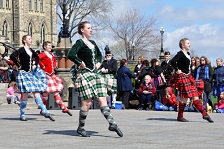

_(2).jpg)
